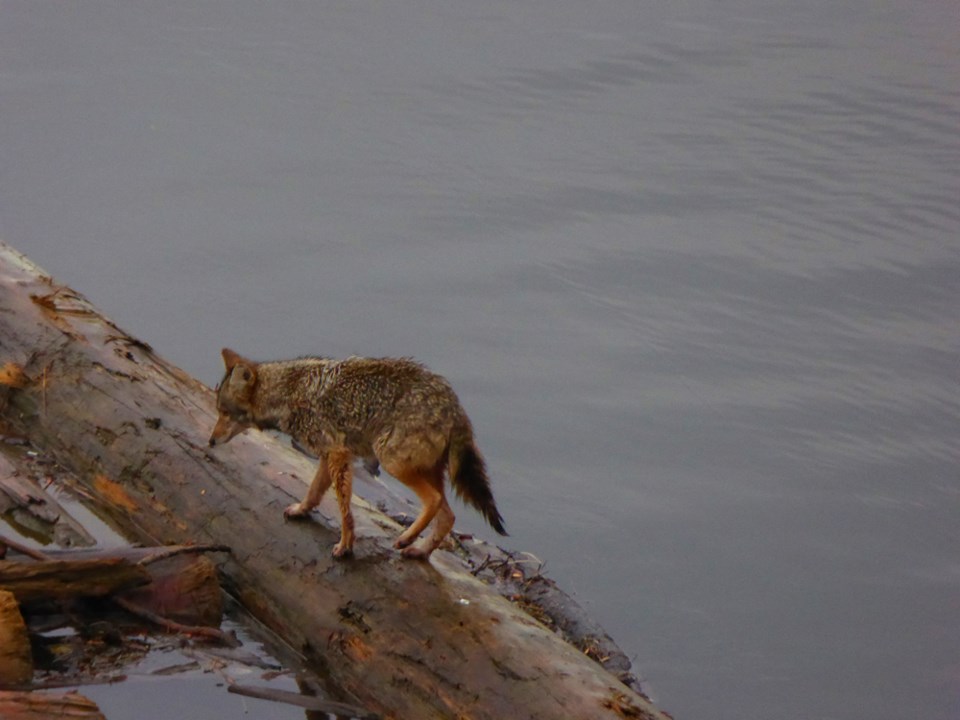The municipality is asking people to take precautions after a series of coyote sightings on the island this month.
There have been several public sightings of the animal by residents, especially by people out walking their dogs. While there haven’t been reports of serious confrontations, sadly not all encounters have ended well, and at least one duck is believed to be a casualty of the coyote, which typically targets small prey.
The municipality (BIM) says if people are able to take certain preventative steps, there shouldn’t be too much cause for concern.
“Coyotes are super curious animals, so sightings are pretty common because they want to look around,” says Carla Skuce, BIM environment and parks planning coordinator. “But encounters with them are pretty rare because they’re skittish. You just need to be able to scare them away.”
“Definitely don’t interact with a coyote, don’t let your dogs play with it, don’t stop to take a picture. If you see a coyote be loud, be aggressive and tell it to go away. As long as that coyote remains skittish then we don’t really expect to see any big issues,” says Skuce.
She says many of the problems with coyote encounters in Stanley Park last year came from people feeding the animals. But in addition to not purposefully giving coyotes food, it’s also important to make sure any food left outside, whether it’s food scraps or pet food, is properly secured to prevent scavenging.
The impact on outdoor animals is likely the greatest concern. Owners are advised to keep a close eye on their outdoor animals, especially cats, and bring them inside from nightfall to early afternoon if possible – coyote’s favourite hunting hours are in the early morning.
For animals and livestock living outside, it’s crucial to make sure their home is secure from breaches. Livestock owners enjoy certain allowances for trapping and hunting animals that are a threat to their livelihood under the Wildlife Act, but still must follow many specific rules including the reporting of any wounded or killed wildlife while protecting their livestock.
Coyote could move on soon if it stays single
Skuce says she thinks Bowen’s current visitor has been here around two months, based on reports of backyard animals going missing and reported coyote droppings. Of course coyotes are not traditional residents of the island, and the working theory is it arrived either by swimming over or hitching a ride on a log boom.
As for resolution, if the coyote is the only one on the island, it may not stay very long. “What we expect and what’s usually happened in the past when large predators come over, is that it’s their instinct to breed,” says Skuce.
“When they come over and they spend some time here, especially for a male, if they don’t find someone to mate with eventually they’re just going to leave. So that’s why we don’t get super concerned when we have a predator here. We kind of wait to see how it plays out,” she adds.
Even if BIM wanted to get involved, provincial rules prevent them from engaging in trapping or killing wild animals. Conservation officers are the only ones who can conduct these operations, and municipal conversations with the department confirmed they’re unlikely to intervene if interactions are limited to just sightings.
“Even though it seems we’re quite protected and people might say this is an invasive species, we are within a coyote’s range here. And they do have every right to be here,” says Skuce.
“People probably shouldn’t be super worried about it… Probably the coyote will move along, and even if it doesn’t, we should be able to learn how to live in harmony with it.”
More information on living with coyotes can be found on the municipal and provincial government websites.

